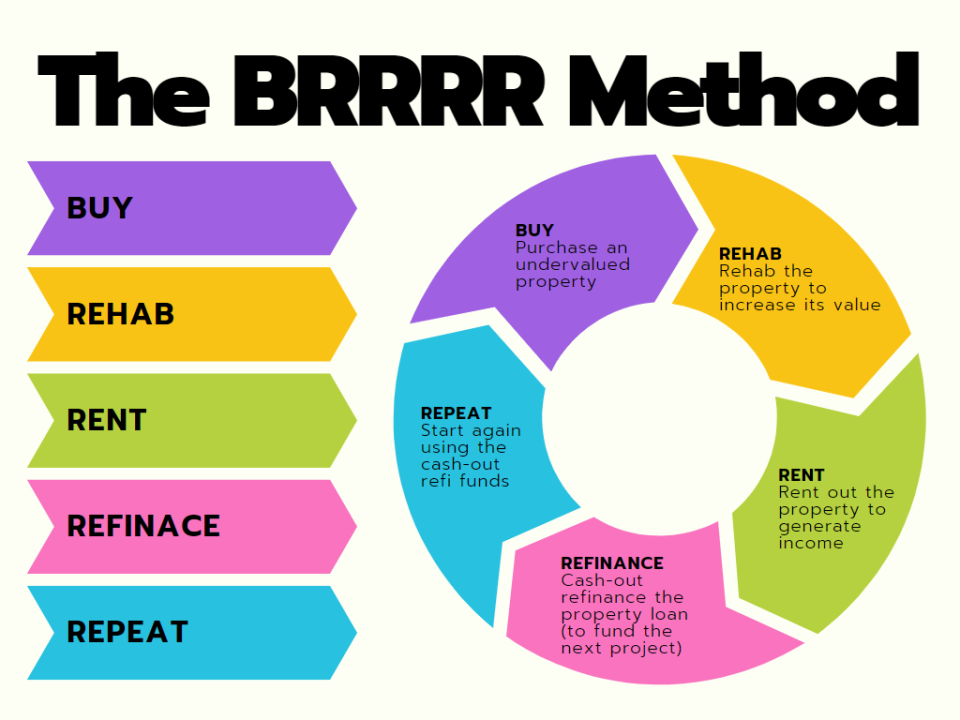In the whirlwind of parenthood, preparing for your child's future can seem like a daunting task. As college costs continue to soar, many parents find themselves searching for innovative ways to finance their children's education without breaking the bank. Fortunately, real estate investment presents a promising avenue for building a solid financial foundation to cover those hefty tuition bills. In this advisory blog, we'll explore six savvy strategies that parents can employ to leverage real estate investment toward funding their kids' college education.
1. Rental Property Strategy: Growing Wealth for Education
Picture this: You buy a rental property when your child is born, opting for a 15-year mortgage. Over time, as rents rise and the mortgage gradually diminishes, the property appreciates, becoming a valuable asset to offset college costs. You can either sell the property when the time is right or continue renting it out for a steady stream of income. This long-term approach not only covers college expenses but also serves as a lucrative investment for your child's future.
:max_bytes(150000):strip_icc()/shutterstock_583803574-e7537da4a36b463eb4ae472cbc7aa6c3.jpg)
2. BRRRR Strategy: Multiply Your Investment
The BRRRR strategy - buy, renovate, rent, refinance, repeat - is a powerful tool for recycling your initial investment into multiple properties.

- Buy - Purchase an investment property, preferably a 'fixer-upper' that needs renovation work. Seek out properties priced below market value.
- Renovate - Perform renovations and repairs to increase the property value. Typical upgrades include kitchen/bath remodels, new flooring, fresh paint, landscaping, etc.
- Rent - With the renovations complete, rent out the property to tenants to generate positive monthly cash flow.
- Refinance - After stabilizing as a rental for 6-12 months, refinance the property based on the increased after-repair value (ARV). This allows pulling out the initial rehab costs.
- Repeat - Take the refinanced funds and reinvest them as the down payment on your next BRRRR project. The goal is to reuse the same initial capital to acquire multiple income properties over time.
- Portfolio growth - Continue buying, renovating, renting and refinancing properties sequentially. This compounds your returns and results in a larger portfolio earning rental income and appreciation, to fund future education costs.
- Leverage - By borrowing against increased property values, your returns are amplified. More deals can be acquired than through savings alone.
By continuously reinvesting the returns from one property into the next, you can rapidly expand your real estate portfolio without sinking additional capital. Through strategic refinancing, you can extract the initial investment and allocate it towards subsequent deals. This cyclical process enables you to amass a substantial portfolio over time, ensuring ample funds for your child's college education.
3. Passive Real Estate Investments: Hands-Free Profits
For parents seeking a more hands-off approach, passive real estate investments offer an attractive alternative. By investing in syndications that specialize in property renovation, you can enjoy the benefits of real estate ownership without the hassle of hands-on management. The beauty of this strategy lies in its ability to generate "infinite returns" as funds are continuously recycled into new projects. With minimal effort required on your part, passive investments provide a reliable source of income to fund your child's educational endeavors.
Related: Living La Vida Florida: the Best Spots for Young Adults to Call Home
4. Flipping Houses with Teens: A Family Affair
Flipping houses with your teenager can be a rewarding family endeavor that provides education and income. Beyond the direct profits from a successful flip, kids gain invaluable experience that enhances their personal and professional development.
When house hunting together, teens learn critical thinking as they analyze properties. Negotiating the contract builds confidence in sales ability. Studying blueprints improves spatial reasoning while planning repairs teaches project management skills.
During renovations, assigning age-appropriate tasks allows kids to develop competence through tangible accomplishments. Sanding, painting and landscaping builds work ethic while installing fixtures fosters problem-solving. Working alongside contractors exposes teens to potential career paths in the trades.

Managing renovations within budget requires math skills and responsibility. Kids help with supply runs to experience the ordering process. Showing progress to potential buyers via open houses prepares teens for future career presentations.
Close of escrow provides a real-world lesson in titles, deeds and negotiating contingencies. Distributing profits teaches investment strategies and financial planning for college. The payoff of combined efforts helps kids value perseverance through challenges.
Beyond the fiscal benefits, quality time strengthens family bonds as a team effort towards shared goals. Working in this low-risk small business environment nurtures budding entrepreneurship. Teens who participate in house flipping gain a competitive edge over peers, with real experience under their belt to discuss in college interviews or job applications. Overall, it's an involvement that yields rewards far beyond any monetary gains.
Related: New Commission Rules: What First-Time Home Buyers Need to Know
5. House Hacking through Kids: Maximizing Returns
House hacking, the practice of purchasing a multifamily property and living in one unit while renting out the others, presents a creative solution for covering college costs. By having your child occupy one of the units, you fulfill the owner-occupancy requirement while simultaneously generating rental income to offset expenses. This clever strategy not only provides a roof over your child's head but also cultivates a sense of financial responsibility as they contribute to the household income.
6. Roth SDIRA: Tax-Advantaged Investing
A Roth SDIRA presents a unparalleled opportunity for tax-efficient real estate investing to fund education costs. Contributions to a Roth are made with after-tax dollars, but qualified withdrawals of earnings are exempt from federal income tax. This allows real estate holdings within the Roth to appreciate untouched for decades.
With a self-directed Roth, numerous real estate plays become available such as turnkey rentals, fix-and-flip projects, bridge loans and REIT investments. By strategically combining lower-risk and higher-reward options suited to investment horizons, substantial sums can accumulate on a tax-free basis. Whereas typical IRAs restrict acceptable assets, a self-directed version permits direct property ownership.

Nearing college entry, a Roth SDIRA's qualified distribution provision enables tax-free withdrawal of earnings for tuition and related expenses. This bypasses the standard Roth rule preventing withdrawals of earnings prior to age 59.5. Even partial withdrawals can meaningfully offset six-figure education bills while leaving the remainder untouched for continued growth.
Post-college, the Roth SDIRA continues delivering opportunities. Income properties provide retirement cash flow while higher-risk plays aim to multiply earlier earnings. Ultimately passing to beneficiaries income-tax free, funds help finance graduate programs, start a business or provide a head start on their own financial security. By liberating real estate gains from income taxes, the Roth SDIRA wields unmatched potency for covering education through savvy real asset investing.
Conclusion
The journey to financing your child's college education doesn't have to be a daunting one. By harnessing the power of real estate investment and adopting a multi-faceted approach, parents can strategically build wealth over time to cover tuition costs. Whether it's through rental properties, passive investments, or creative family ventures, there are myriad opportunities to secure your child's future while nurturing their financial literacy along the way. So, embark on this journey with confidence, knowing that with careful planning and perseverance, you can pave the way for your child's academic success. Happy investing, and here's to a bright future ahead!





